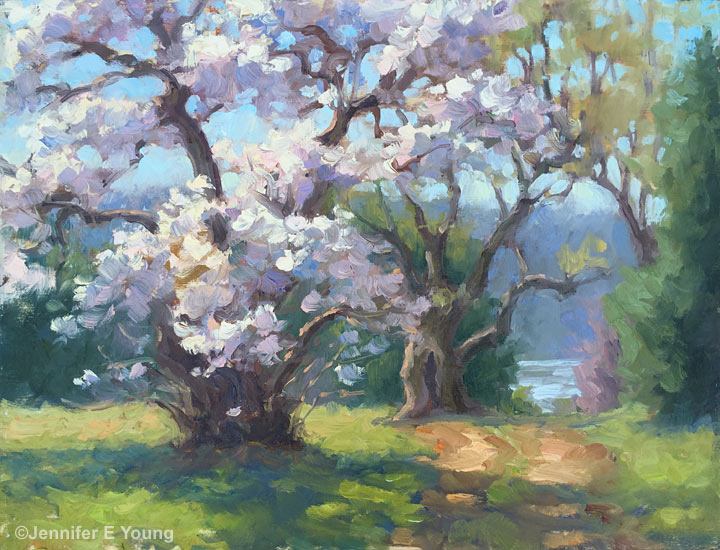Reworking and "oiling out"
/Each year my family looks forward to our annual beach week on the Outer Banks of North Carolina. I have written a lot about how much I love painting down there. A week never feels like enough time, but this year it feels like a lost luxury because the family made the tough decision to cancel our rental due to the risks of traveling during COVID19.
Needless to say I am feeling very nostalgic for the beach, and have spent a lot of time looking the painting, “Radiant Dawn,” which I painted a couple of years ago during another pivotal time of my life. This was the view from the bedroom balcony of our beach rental, and I hung it up in our living room to transport me back there in spirit. It was an emotional time for me but the awesome beauty of this sunrise lifted me up and gave me a deep sense of connection, hope, and gratitude.
But of course the artist in me started to analyze the painting each morning as I “enjoyed” it from our breakfast nook. While I love the sky, I found myself really wanting to rework the lower portion of the piece. I found it altogether too green and too dark, and it did not evoke the feeling of “dunes” to me. I remember WHY I painted it this way, (I didn’t want to make the painting too busy and detract from the sky) but it just wasn’t working for me.
Sometimes when I rework a painting I have to sand the area down or even first scrape down some of the built up paint texture ever so gently with a razor blade. Otherwise the previous brushwork underneath is too distracting. In this case the surface was relatively uniform. It was, however, a bit slick and required some “oiling out” to assist in the adhesion of the new paint layers. To rework a dry painting I may use a bit of my painting medium mixed with Gamsol, or even a light spray of retouch-varnish applied to the area. For this piece, just oiling out with Gamsol seemed to be enough.
I basically reworked the lower third of this painting, leaving the sky completely alone. (It may look like I did more to the sky, but that’s because I think I did a better job of color correction on my digital image this time around.) Painting everything in a close value range can be a challenge, but an important one to keep the sense of unity I was after from the start. Here is the newly adjusted piece, with changes that my family didn’t even notice 😂. Oh well! I feel happier about it, so I guess that’s what’s important.
P.S. “Oiling out” and reworking are generally not advisable to do over a final varnish unless you can completely remove the varnish layer due to possible problems with cracking that can ensue. I always use retouch varnish though, both for this reason and because personally I don’t find final varnish necessary.



















